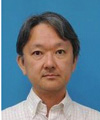 |
|||||
|
|
|||||
|
Feature Articles: Activities Toward Service Incubation to Speed Up R&D of Service Systems Vol. 11, No. 9, pp. 32–36, Sept. 2013. https://doi.org/10.53829/ntr201309fa6 The XFARM Platform for Faster Service CreationAbstractThe NTT Service Innovation Laboratory Group is cooperating with Group companies to construct a research and development (R&D) cloud platform called XFARM (pronounced “cross farm”) that is equipped with a set of service prototypes and a set of components such as processing engines to provide an environment for conducting demonstrations and trials outside the research laboratory. This is intended to achieve rapid implementation and verification of R&D technology trials. This article describes the XFARM platform for creating services on the cloud. 1. IntroductionThe NTT Service Innovation Laboratory Group is promoting service proposals that combine NTT research and development (R&D) technology, outside technology from other research organizations, and commercial products and is also providing an environment that allows rapid service trials. We are constructing a common cloud service platform as an environment that will allow rapid implementation of product and service trials and make it easier to visualize potential services. XFARM (pronounced “cross farm”) is the general name given to this cloud platform, as well as the applications built on it and various components such as research laboratory development engines. The name XFARM is intended to capture the idea of a place for unleashing the collective power of the NTT Group companies and research laboratories to create a stream of new productive possibilities. We have also designed a representative logo (Fig. 1) and are working to broaden recognition of the platform.
In recent years, it has become increasingly important to have a lean startup approach to R&D and service development. The term lean startup means to build up a service idea in a short time and to use a cycle of rapid implementation of verification testing and trials and application of the knowledge obtained from them to further improve services. XFARM is an environment for supporting such rapid R&D and service development. XFARM is a cloud-era service creation environment that makes technology that is available on the market and technology that is produced by research laboratories available as service components and prototypes. It enables the development of unprecedented new services and even services that have not occurred to the developers themselves. It achieves this through facilitating various combinations of technologies, services, and content and field trials that allow feedback of the opinions of many users in the development process. XFARM also serves as an environment for development and verification within the research laboratory. The sharing of functions in a cloud environment offers various benefits, such as reduced costs, stimulation of a fusion of new service ideas and creativity through the sharing of research development engines, and greater agility in conducting exhibitions and demonstrations. 2. XFARM configurationXFARM mainly comprises a cloud platform and applications (Fig. 2) that can provide an optimum environment for various use scenarios.
2.1 Cloud platformThe cloud platform uses the server resources of the existing R&D cloud [1] to provide a virtual environment and allow efficient use of resources and rapid provisioning. The service menu includes various combinations of virtual machine (VM) plans that offer varying numbers of vCPUs (virtual central processing units), memory capacities, root-disk capacities, guest OS (operating system) templates, and network services. To facilitate the construction of trial environments and reduce the amount of resources used, the NTP (network time protocol), DNS (domain name system), a yum repository service, and other such functions are provided as common functions. 2.2 ApplicationsApplications have been constructed to enable the use of research laboratory development applications (mainly visibility enhancing products) and research laboratory development engines such as for speech recognition, image recognition, and video encoding. Applications are basically constructed in a virtual environment, but XFARM also provides an environment that enables seamless use of virtual environments and real environments to handle cases in which architectural or functional constraints make the use of a virtual environment inappropriate. XFARM thus allows unified trials. We are also completing a network environment that will enable XFARM to provide for flexible implementation of demonstrations, exhibitions, and trials through selection of various forms of networks with connections to a virtual private network (VPN), the Internet, and other network resources to match the needs of customers for whom the trial is designed. By allowing access to the GEMnet 2 (Global Enhanced Multifunctional Network 2) global research network [2], global-level trials with access from North America and other places can also be conducted in a short time when a service environment is constructed on XFARM. 3. Features of XFARMXFARM has several advantageous features; we focus here on readiness, flexibility, adaptability, and low-cost construction. 3.1 ReadinessFast provisioning is possible because XFARM is pre-equipped with service components and prototypes. We are working towards achieving the ability to implement trials within one month from the planning stage to the start of trials at a quality level that involves about 100 users. 3.2 FlexibilityThe results of research and development and on-the-market technology etc. are made available in the form of service components and prototypes that can be combined quickly and flexibly in a variety of ways for rapid implementation. We are also investigating ways to maximize compatibility with the service provisioning environments of the NTT group to further shorten the time from when R&D results are provided to the business companies to when services are offered. 3.3 AdaptabilityBecause services can be developed on XFARM and trials of the new services can be implemented without further modification, it is possible to go beyond bench-top testing to verify actual marketability. Efficient (rapid) development in which service ideas and concepts can be improved by quickly adapting to market trends is also possible. 3.4 Low-cost constructionXFARM provides a low-cost cloud platform that combines advanced research technology and on-the-market technology and allows full use of the advantages of the cloud platform to obtain the benefits of a centralized virtual environment and peripheral network environment in order to reduce development costs. 4. XFARM use scenariosThe XFARM use scenarios include various ways of using the platform. In the initial stage of research and development, XFARM provides an environment for development and verification that reduces the cost and shortens the time of constructing environments by sharing resources. In the stage where there is some degree of progress in research and development, and applications and processing engines can be used, trials can be conducted in environments that assume specific services. Joint testing for mutual purposes that involves the research laboratory and outside organizations is also possible. XFARM is thus a platform that can be used in all stages of the service incubation cycle, from R&D to commercial service trials. 5. Trials with XFARM5.1 XFARM service levelThe NTT research laboratories have been implementing a service level agreement (SLA) for assuring service quality (Table 1) in service trials. The SLA serves to specify the level of service provisioning with items such as the examples presented in the table so that trials can be conducted without concern by XFARM users. An operation and maintenance system, monitoring system, and other such facilities are also provided to ensure stable service trials.
A high level of software quality of the applications used in service trials is maintained, and only applications that conform to the in-laboratory development standards and that satisfy verification testing and business company trial standards are provided. 5.2 Actual results from using XFARMThe use of XFARM has already started in some demonstrations, exhibitions, and service trials for customers outside the research laboratory. This is possible because XFARM takes advantage of the agility afforded by the cloud platform. Applications that connect to XFARM put service concepts into concrete form in showroom demonstrations and exhibitions. XFARM is thus used as a tool for making day-to-day proposals to customers in relation to future business. These trials also give customers an opportunity to voice their opinions and needs with respect to the exhibitions, thus providing the research laboratory with feedback that can be applied in the next round of R&D. Previously, necessary tasks ranging from identifying issues and designing networks to actually constructing a system have been coordinated individually when conducting demonstrations, exhibitions, and trials. That has resulted in waste through replication of work. However, applications constructed on the XFARM platform have been handled in as little as a single day or within several days, which shows the steady progress we are making in shortening this process. 6. Future developmentIn the future development of XFARM, we will add applications and processing engines and implement more trial conditions. The environment for using XFARM will also be continuously improved and expanded to provide greater convenience to both trial users and researchers and developers and to provide services that offer a high degree of satisfaction. Although XFARM was begun as a service to be used in Japan, our plan is for the platform to serve as a global development tool for R&D. Even now, global use is possible via Internet VPN and other such mechanisms, but we are investigating future expansion to overseas bases as well. With all members of the NTT Group as value partners, we will push forward into the future while building XFARM into a platform for creating services that please customers. References
|
|||||



















